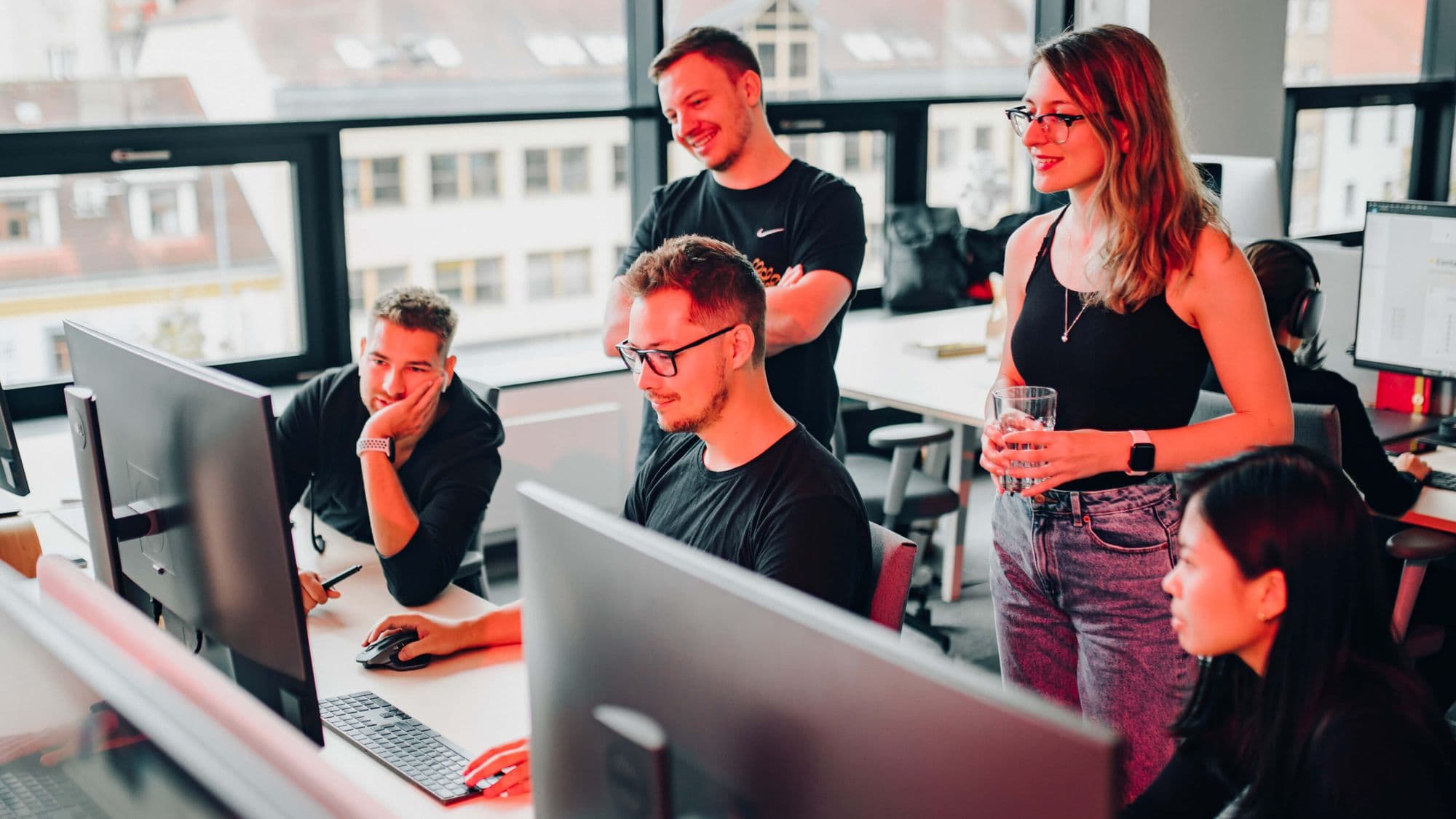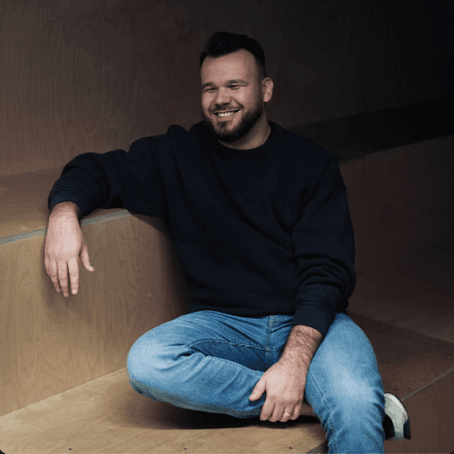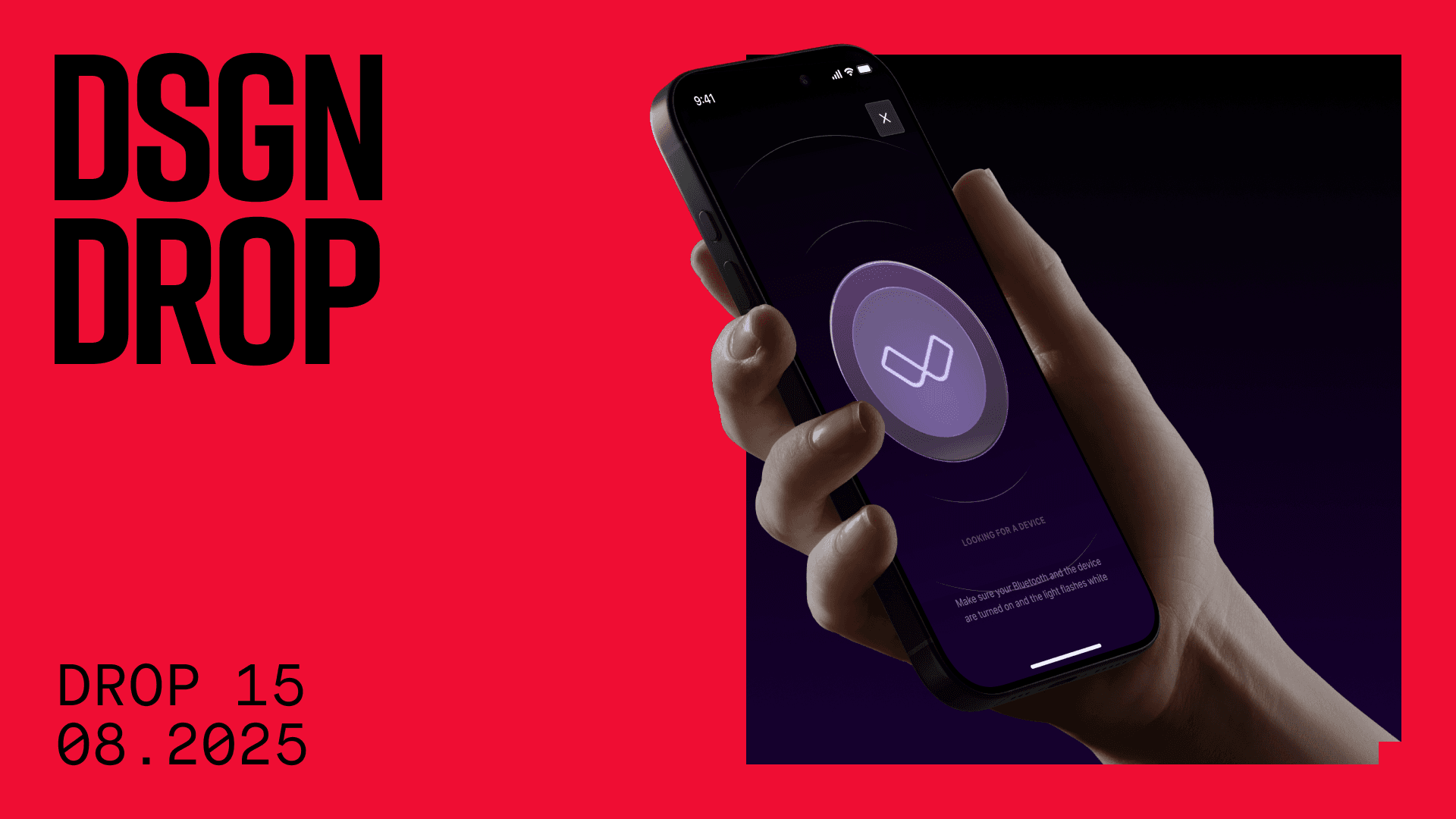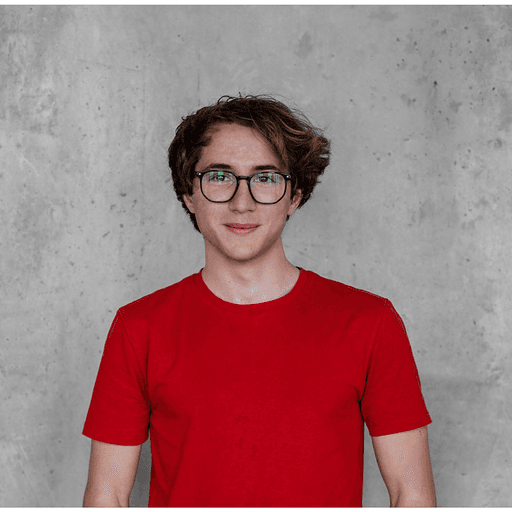Following Phase 1: Discovery, you’re now equipped with a solid overview of the product, market, tech stack and user personas, as well as product specifications, wireframes and both time and cost estimates. Everything you need to start the Design Phase on a strong note.
(If you’re already curious, check out more about Phase 3: Engineering and Phase 4: Scale.)
Before we get into the details of Design, please note that we’ll be describing the process under the assumption that the product has gone through Discovery. If this is not the case, Design can be significantly more complex to navigate.
Now, let’s talk about what you as the client can expect from STRV during the Design Phase.
Our Design Team's Capabilities & Approach
As a team, STRV product designers are skilled in UX, UI, interaction design and motion design. This is one of our greatest strengths.
Each of our designers is able to make both the UI and UX parts of the project work together very well. Unlike many other companies that prefer focusing solely on one of those aspects, we're able to take on both the functionality and aesthetic feeling of product design.
This is crucial because, in the end, it's all a part of one experience for the user. Understanding the ins and outs of both the technical and the visual — which are, in a way, different disciplines — means we can make sure the product not only works properly but is engaging.
Our abilities allow us to stay true to Design Thinking and Lean Startup Principles. If you’re unfamiliar with the terminology, it means we always, always prioritize the users’ needs above all else. That’s how we build products that are easy to use, accessible and engaging.
Transitioning From Discovery Is a Breeze
By the time we move into Design, your product already has a strong identity and team.
Most often, the product manager and designer who worked with you during Discovery remain on the project during Design. Additionally, everything we learned during that first phase is incorporated into a number of wireframes (a sort of skeleton format that focuses on functionality and is a rough outline of future designs).
At this point, we know what we’re building and start working on the how.
The product manager’s first main focus is to make sure nothing we’d mapped out during Discovery is forgotten, no feature left out. Together with the designer, they discuss if any development issues may come up and how to avoid them – by spending more time on UI, for example.
Everything is analyzed from all sides so that once the designer gets to work, he/she is absolutely clear on how to complete all wireframes before moving on to UI and creating the final designs.
The Process, the Tools… and Where You Come In
Our designers are known to enjoy working with clients directly. It allows them to make sure both sides are well-informed, which means we’re making the right decisions on the go.
It’s usually up to you and the designer to decide how often you will sync. We adapt to your preferences. But what we always do are daily stand-ups on Slack, where the designer writes down what he/she worked on and what’s next on the agenda.
Over the years, we’ve had the time to establish what works well for us and our clients (like the above-mentioned stand-ups). What has helped us refine our Design process most is splitting it into six stages:
1. Project Onboarding (designer is present to fully understand client goals)
2. Discovery & Research (designer helps give your idea the right look, direction, flow and logic)
3. User Experience Design (UX)
4. User Interface Design (UI)
5. Development (designer is always available for collaboration and support)
6. Maintenance (designer helps with post-launch care and scaling)
We run every stage in iterative feedback loops to ensure that we’re aligned on the vision at every step. We use Figma to stick to this process and to drive collaboration on multiple levels: between designers within our team for mutual reviews, between designers and clients directly on projects for complete transparency and between designers and engineers to ensure smooth implementation later on during the Engineering Phase.
Speaking of collaboration...
Get One Designer and You've Got Them All
Apart from the individual skills of the designer assigned to your project — who is fully dedicated to just one project at a time — you also get the collective intelligence of the entire Design team.
There are three main approaches to internal collaboration that guarantee the above.
The first is that the Design Team Lead and Creative Director work closely with every designer, reviewing the work and providing guidance whenever needed — often at a moment’s notice.
The second and third are Sharing Sessions and a Designers Meeting, during which all designers are present and which alternate every two weeks.
During Sharing Sessions, designers meet to discuss highlights from their current projects. They’re able to go over specific screens or flows, which is great for getting more context, seeing things from different angles and coming to decisions in cases of uncertainty.
The Designers Meeting is a time to analyze how we do things. Do any aspects of the Design process require change? As designers come across new situations on projects, they tend to either refresh the process or at least take a close look at it.
All of the above is what ensures that the Design team keeps moving forward and doesn’t get stuck with something outdated.
The Product Manager Keeps Everyone in Sync
As the product takes shape, it can happen that there are too many cooks in the kitchen. The product manager is there to keep everyone focused on the big picture.
Sometimes, one stakeholder wants pink, the other blue, and another wants to tweak minor details. That’s when the product manager keeps the number of revisions in check. Otherwise, the timeline is changing, which affects the cost and pushes the release date further away.
The product manager is also there to discuss your worries when needed. You may sometimes need reassurance that the design is not just one designer’s personal preference; it’s the result of expert UX/UI knowledge and of an internal discussion and agreement within the team.
Nonetheless, we never want you to make a decision under the pressure of skepticism. Our designers are always happy to provide you with options to choose from.
And after all of that, if we really cannot agree on pink vs. blue, the product manager turns to user testing. Once there’s data backing up each proposed decision, it’s easier to make the call.
A Bonus Phase Within the Phase
It can be hard to imagine just how far an expert designer can push a product if given the chance to go creatively wild. Cue the conceptual phase.
Taking just a few days and putting zero restrictions on where the design can go, the conceptual phase allows designers to explore different ways of approaching the project; they’re able to play around with different ideas, creating a vision that doesn’t take the initial briefing’s guidelines into strict account (while still keeping them in mind).
This is usually the time we get to blow our clients away and inspire ideas from all sides. It’s a lot of fun for designers because they can come up with a fresh direction for the product, one in which they really believe, and they get a chance to present and “sell” it to the entire team.
The market is so saturated that if you really want to stand out, investing more time into visuals is often the way to go. Giving experienced designers enough space to come up with a variety of ingenious ideas means giving your product a much greater chance of outlasting its competition.
Having Engineers Available for Input Is Gold
Throughout Design, our engineering team is always ready to assist. This is a huge benefit. When your designers like to push the envelope, you sometimes need an engineer to jump in.
For example, a designer might have a grand idea, but there are times when that idea is very new and hits unknown territory. Those ideas are what elevate our designs, but they require we ask engineers how long it will take to incorporate because the timing affects planning and cost.
And of course, as we move through the Design Phase, we’re already speaking with engineers to find who’d be best to bring in for the next phase: Engineering.







